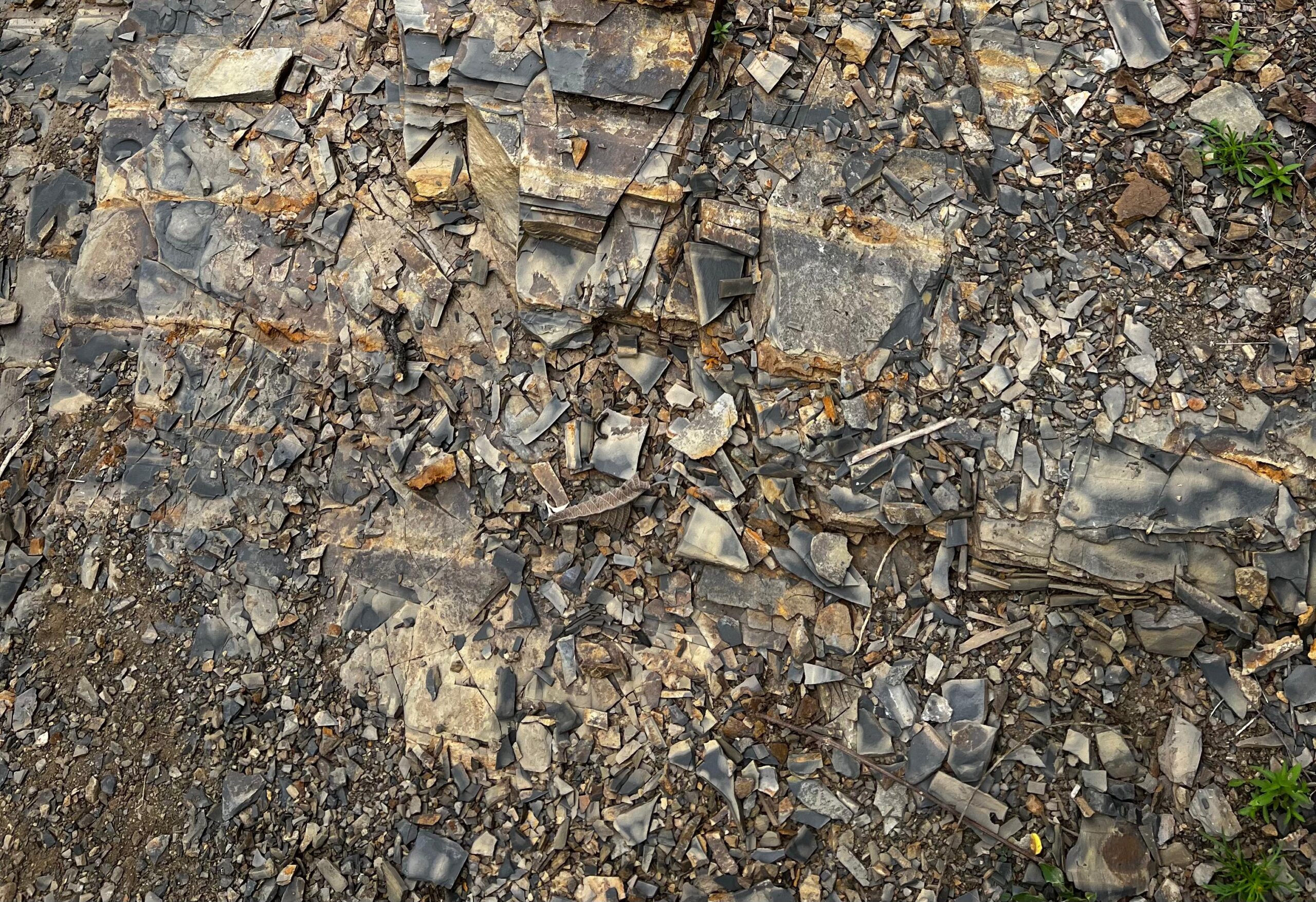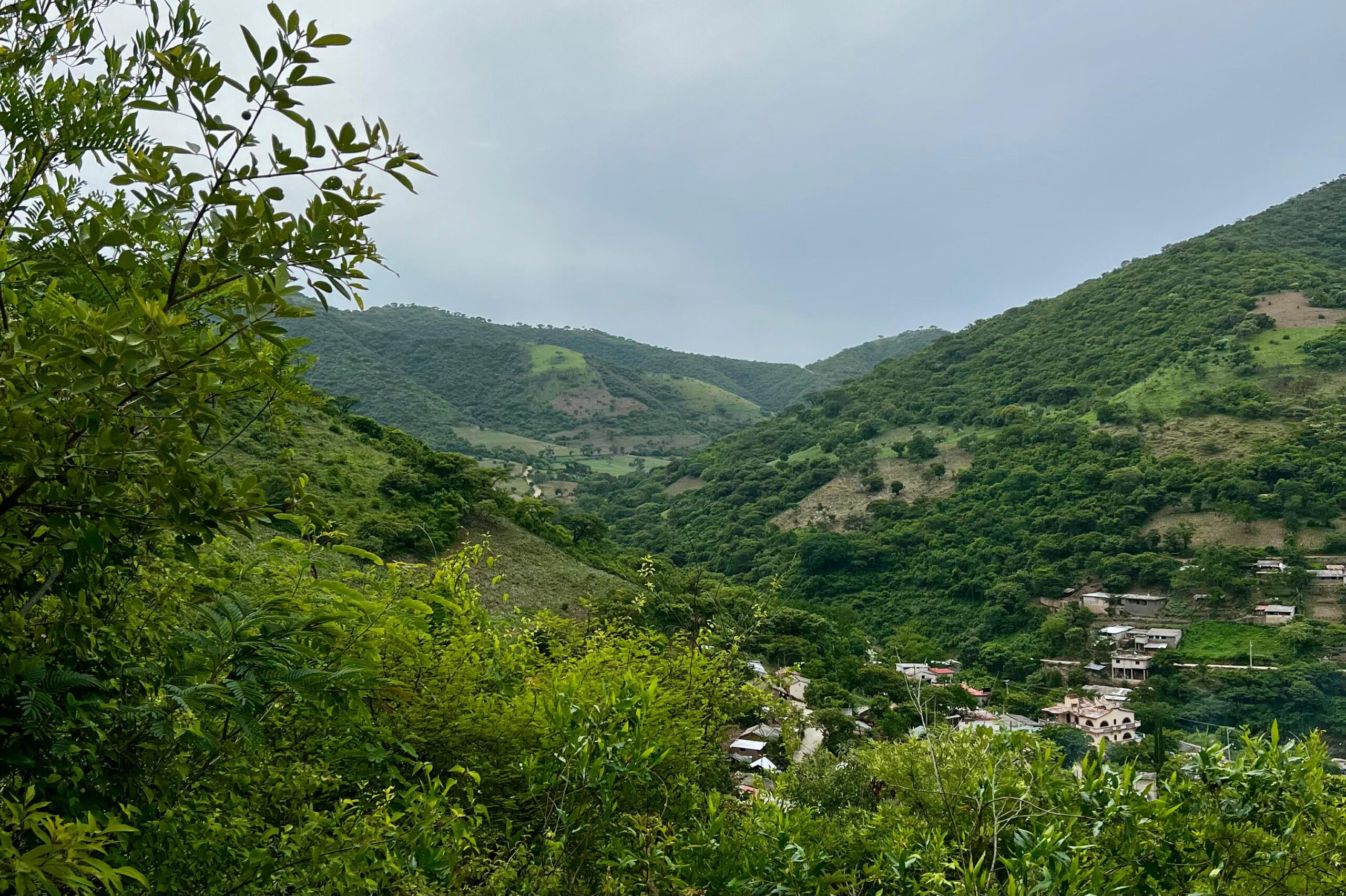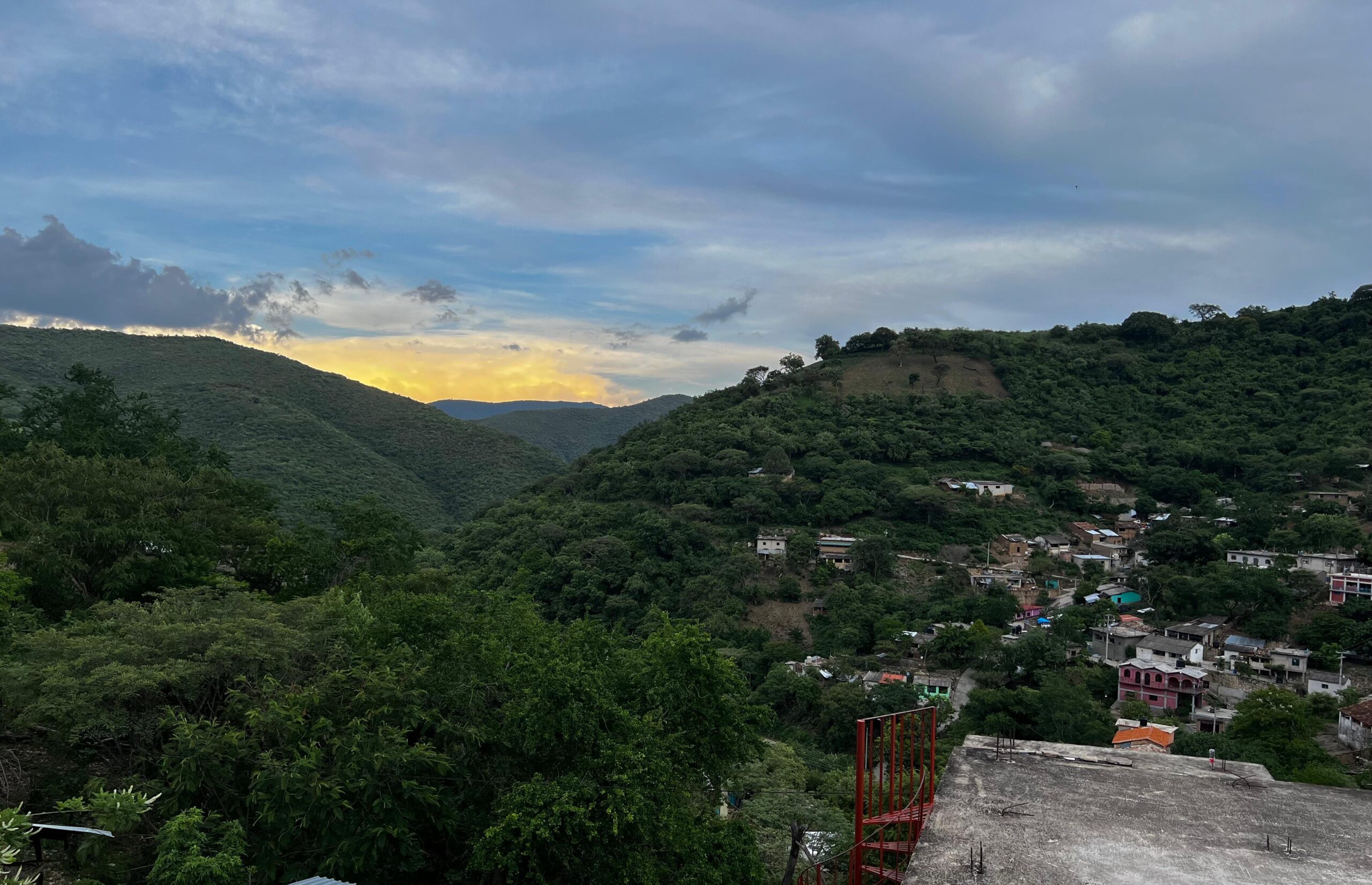*Una versión en español está disponible en este enlace
I wanted to make a little bird. Taking a small piece of clay, I rubbed the soft material between my warm palms. I could feel the grit of the clay, as small pieces of stone reworked themselves to the surface and back again. I pressed it flat and then began to round it into a ball. The clay was still a little too sticky, and the burnt ochre color stained the creases of my fingerprints.
This was summer, a few years ago. I sat underneath my uncle’s house in Tepoxtepec, Guerrero, with two girls who lived across the street. The sisters, Arely and Nataly, had brought a blue pail of sediment from their father’s field. Their field is one of the furthest away, almost at the point where the road begins to climb the mountain pass that separates our village from the next small town, seven miles away. At this time of year, around July, the baby corn plants begin to break ground, their flat leaves emerging a bright green. The soil is full of large stones and even boulders, but the corn plants still twist and root their way into the ground. To collect this much pure sediment, the sisters had to overturn the heavy rocks out of the ground and pick out the smaller stones from the pail.
Nataly then was 12 years old, a child with a small, round face and soft eyebrows. Her older sister, Arely, is several inches taller at 14, with large almond eyes that upturn at the corners. Nataly likes to play music loudly from her open bedroom window, from a speaker that is almost as tall as she is. Arely has an almost scholarly air, and meets my eyes with a shy smile. Their older brother, Diego, left home years ago to join the Mexican National Guard. He sometimes uploads videos on Facebook from the bed of a truck, surrounded by other boys heavily clad in green and brown. Their faces are masked in black balaclavas. Their eyes peer at the camera from under the rims of their helmets.
I helped Arely haul the heavy pail down the steep stairs while Nataly carried plastic water bottles. My uncle’s house is built into the slope of the mountainside; the part of the house that contains the kitchen stands on concrete stilts, and we sat directly below it. It’s where the village dogs like to sleep, out of the sun in the heat of the day. La Loba, a female mutt with the pointed ears and snout of her namesake, slept beside us with her two remaining puppies on the cool cement floor. Their swollen stomachs, tight like balloons, slowly expanded and deflated.
Nataly and Arely poured water from their plastic bottles into the pail of dirt, and thrust their hands into the mixture to knead it through. The result was dry and crumbling, so we added more water, little by little. The dirt began to soften into true clay, a brown-red like the eraser of an old pencil. I marvelled at how the dry dirt could transform into something so malleable. I would not have known how to make clay in this way, but Arely and Nataly did, who had lived in Tepox all their lives. Though I was several years older than them, the girls seemed older in their wisdom about the land that they were born into and I was not.
Nataly stuck her small thumb into the ball of clay, then continued to press in a circular motion, widening the walls of a small bowl. With new clay, she rolled and shaped little handles. Arely had flattened a large ball of clay, put it on the ground, and started to shape it into a heart. She then pinched the edges of the heart upwards, to make a shallow jewelry dish.
I formed a head out of my bird’s clay body, and pinched a beak out of the head. I took smaller pieces of clay and pushed them flat, molding them to make teardrop-shaped wings. With tiny balls of clay, I gave the bird eyes. Thin lines carved into the wings with a stick became feathers.

We left our creations in the sun to dry. I could feel its heat soak through my skin and into my bare arms. There’s a kind of nakedness to the sun in Tepox. At five thousand feet of elevation, we are physically that much closer to it. Deep in the mountains, there is no man-made barrier between the village and where the sun hangs, blindingly. The soil takes in its light like water, and the corn grows profusely without much prompting. Last summer, I helped my uncle sow his field. The corn and calabaza seeds are nestled into the ground just below the surface. He taught me to replace the dirt over the seeds gently, so the soil remains loose, so the buds can still push through the ground. I imagined the seeds would be as smothered infants, unable to breathe.
In late afternoon, we ran downstairs again to check our clay objects. At this time of day, the sun almost touches the horizon of darkening mountains, soon to disappear. My bird was still too soft, the ochre color still transferring. It felt horribly delicate in my hand. The water had leached a little from the clay and left it a bit crumbly. I imagined that the harsh fires of a kiln would have petrified the organic material. The dehydrated handles on Nataly’s bowl already cracked dangerously.
At nightfall, we decided that they were dry enough, and took them upstairs to the kitchen. Arely brought over a set of watercolors, the paints dried hard in their plastic shells. Just as with the clay, a little water revived them. I offered a plastic paintbrush that I found in my backpack, but we soon realized it was impossible to use on this clay. We used our fingers instead. I dipped my finger into the water, then rubbed it into the blue well. The paint transferred wetly and nearly transparent, seeping into the grain of the clay. My bird became faintly blue, its beak yellow, its accompanying nest orange. The orange and yellow barely registered on the clay, already full of warm hues, sun-fired.
The clay bird sat on the kitchen balcony for the next few weeks. We watched real birds flit around our balcony while eating breakfast together in the mornings. The morning birds, and some of the butterflies, are an impossibly pure white. Their wings appear almost unreal, flashing at a certain angle in the light. My mother tells me that they bring messages from the dead. I know that she thinks of her grandmother, who raised her when her own mother looked for work in the cities. My great-grandmother passed just a few years before we made it to Mexico for the first time. My mother wept when she saw the grave for the first time, a heavy, marble monument set with rose quartz. It stands on top of a tall hill, looking out towards a great green expanse. I came to understand that we had irrevocably neglected a privilege that in my ignorance, I did not know we had: to return and see loved ones before it was too late. Time, like promises, cannot be taken back.

Arely wanted me to promise that we would come back to Tepox that December, in time for her quinceñera. In the middle of July, her mother was already extensively planning the event; she furtively dropped hints, over warm bowls of atole, that I should participate as a ceremonial older sister figure. By winter, increasing cartel violence would close down the roads that connect Tepox to the cities. Middlemen from Teloloapan and Iguala, who provide commercial products like Coca Cola and medicine, hesitated to come near Tepox. Our already self-sustaining village had to become even more self-sufficient. Diego came by our house one afternoon with news from the cartel front: the warring groups, the young recruits, the massacring of feria celebrations and small villages like ours. While Tepox was left to fend for itself after only a brief stationing of the National Guard, my mother and I worriedly checked Whatsapp and Facebook messages, isolated in our own way and yet, in a twisted sense, free to come and go from this side of the border, free to keep or break promises.
I write this from a café in New York City, where I am in a writing program, a thousand and a half miles away from my own family. My cousins are separated from their parents by borders and danger and necessity and yet, I neglect the opportunity to be with my own. I wonder at this: that though made of the same clay, we enter this revolving world as does scattered dust.
We went back to Tepox this past summer, when travel was possible again. The village feels altered by loss, that things are not as they once were. The children no longer gather to play basketball at sundown, where the older kids would drive their motorcycles onto the court. I remember their low rumble, their headlights flashing across the walls. Some of them are now in the United States. These distances feel elastic, between where I find myself now and where the clay bird perches on the balcony of my uncle’s house, to be blown away as a crumbling clay bird must.

